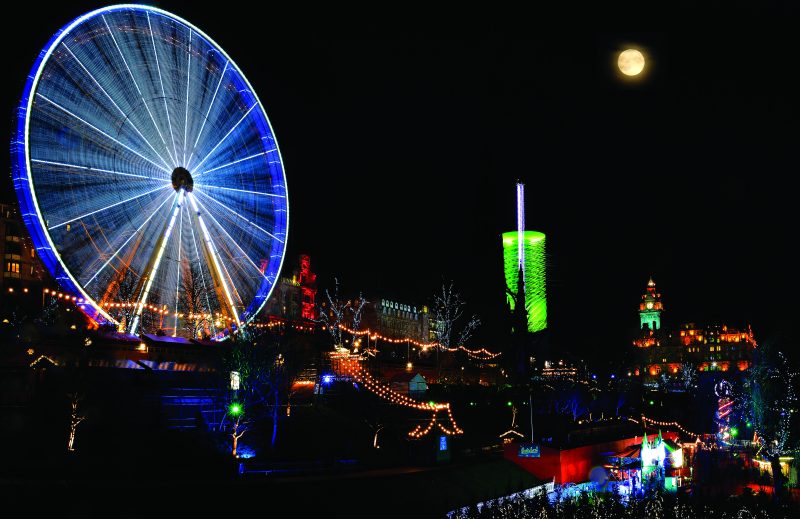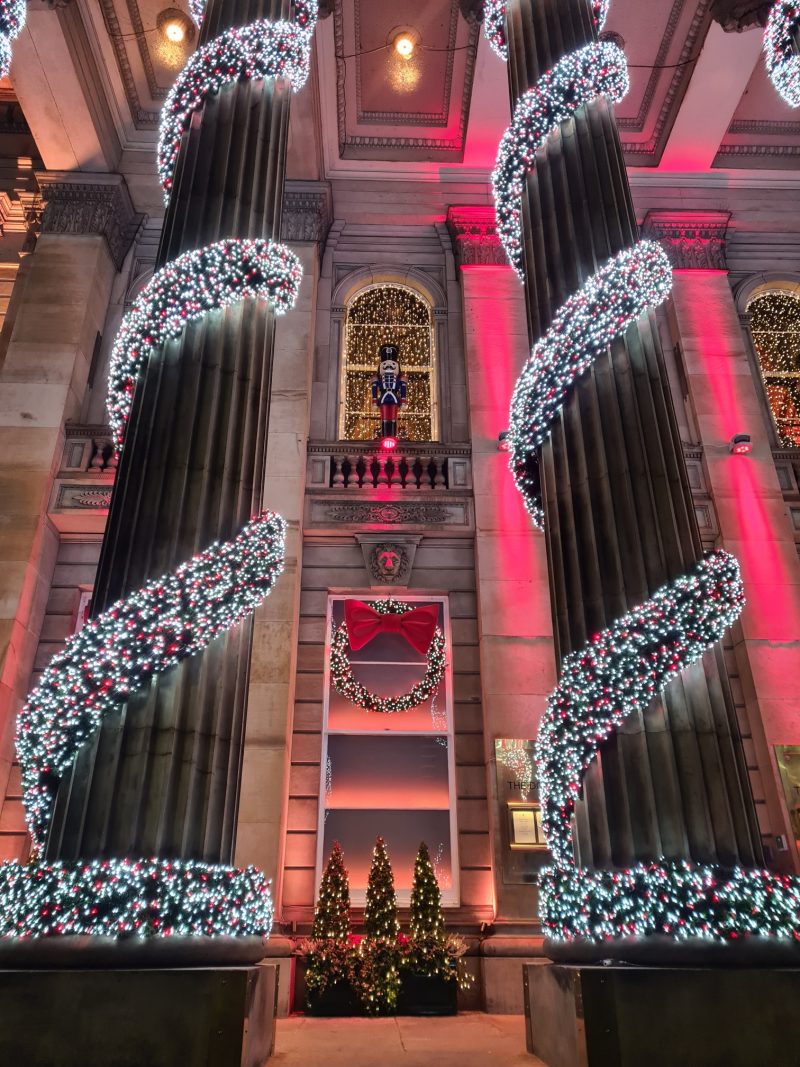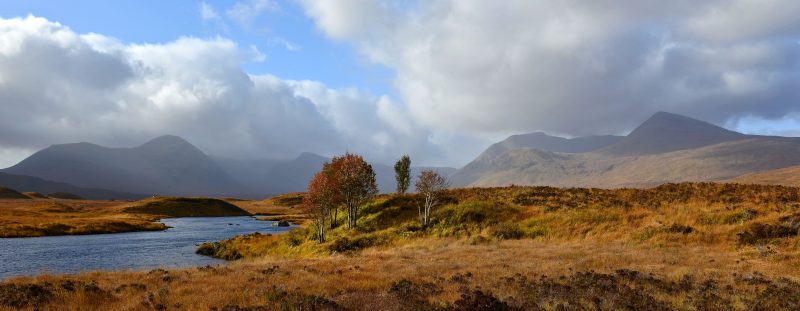UK Destinations
Shetland Islands
Shetland Museum and Archives
A comprehensive museum showcasing the history, culture, and natural heritage of the Shetland Islands, featuring exhibits on maritime history, archaeology, and local traditions.
Jarlshof
An archaeological site with well-preserved ruins spanning from the Stone Age to the Viking Age, offering insights into the early history and settlement of the Shetland Islands.
St. Magnus Cathedral
A historic cathedral in Kirkwall, Orkney, known for its striking Romanesque architecture and rich history, reflecting the region’s ecclesiastical heritage.
Mousa Broch
An ancient Iron Age broch (a type of fortified tower), renowned for its exceptional preservation and historical significance, providing a glimpse into prehistoric Shetland.
Unst Heritage Centre
A museum located on the northernmost island of Unst, featuring exhibits on local history, culture, and crafts, including a reconstructed croft house and displays on traditional island life.
Sumburgh Head
A scenic headland offering dramatic coastal views, a historic lighthouse, and opportunities for birdwatching, including seeing seabird colonies on the cliffs.
Eshaness Cliffs
Stunning coastal cliffs known for their dramatic rock formations, sea stacks, and picturesque landscapes, ideal for walking and enjoying the rugged natural beauty of Shetland.
Scalloway Castle
A historic castle built in the early 17th century, offering a glimpse into Shetland’s past with its well-preserved ruins and informative exhibits on the castle’s history.
Bressay Island
Known for its scenic landscapes, historical sites, and walking trails, including views of Lerwick and the surrounding seascapes.
Norwegian Church
A historic church reflecting Shetland’s connections with Norway, offering insights into the cultural and historical ties between the Shetland Islands and Scandinavia.
Lerwick
The largest town in the Shetland Islands, featuring a charming harbour, local shops, and cultural landmarks, providing a base for exploring the islands and experiencing local life.
Whalsay Island
Known as the “Bonnie Isle,” offering beautiful landscapes, local culture, and historical sites, including ancient ruins and traditional Shetland crofts.
Shetland Pony Stud
A place to learn about the Shetland Pony breed, with opportunities to see these iconic ponies, learn about their history, and enjoy interactions with the animals.
Orkney Islands
Skara Brae
A remarkably well-preserved Neolithic village, offering a fascinating glimpse into prehistoric life with its ancient stone houses, furniture, and artefacts, a UNESCO World Heritage site.
St. Magnus Cathedral
A striking Romanesque cathedral in Kirkwall, known for its stunning architecture, vibrant stained glass windows, and historical significance as a major religious and cultural landmark.
Ring of Brodgar
A magnificent stone circle and henge monument, part of the Heart of Neolithic Orkney UNESCO World Heritage site, providing insights into ancient ceremonial practices and astronomical alignments.
Maeshowe
A prehistoric chambered cairn with impressive architectural features and Viking runic inscriptions, offering a unique look into Neolithic burial practices and Norse history.
The Italian Chapel
A beautifully decorated chapel built by Italian prisoners of war during World War II, known for its intricate frescoes and charming architecture, reflecting the craftsmanship of its builders.
Brough of Birsay
An archaeological site on a tidal island, featuring the ruins of a Norse settlement, Pictish and Viking remains, and offering stunning views of the surrounding coastline.
Eday
A scenic island known for its rich archaeological sites, including Neolithic structures and Norse ruins, as well as its beautiful landscapes and peaceful rural atmosphere.
Orkney Museum
Located in Kirkwall, this museum offers exhibits on Orkney’s history, from prehistoric times to the present day, including artefacts, local crafts, and historical displays.
Hoy
An island offering dramatic landscapes, including the famous Old Man of Hoy sea stack, rugged cliffs, and excellent hiking opportunities, providing a stunning natural backdrop.
Harray Loch
A large freshwater loch known for its birdwatching opportunities, peaceful surroundings, and historical significance, with evidence of ancient settlements and artefacts.
Rousay
An island with a wealth of archaeological sites, including the Rousay Broch and various Neolithic structures, as well as beautiful landscapes and traditional Orcadian life.
Gurness Broch
A well-preserved Iron Age broch located on the north coast of Mainland, featuring a circular tower and surrounding settlement, providing a glimpse into ancient Orcadian life.
Kirkwall
The largest town in Orkney, known for its historic sites, local shops, and cultural events, serving as a hub for exploring the islands and experiencing local life.
Inverness
Inverness Castle
A historic fortress overlooking the River Ness, offering panoramic views of Inverness and its surroundings.
Loch Ness
A world-famous loch renowned for its mysterious waters and the legendary Loch Ness Monster, offering scenic views and opportunities for exploration along its shores.
Urquhart Castle
A dramatic ruin overlooking Loch Ness, with a history dating back to the 13th century, providing scenic views, historical exhibits, and a glimpse into Scotland’s medieval past.
Culloden Battlefield
The site of the 1746 Battle of Culloden, featuring an immersive visitor centre with interactive exhibits and guided tours that provide insight into this pivotal event in Scottish history.
Inverness Museum and Art Gallery
A museum showcasing Highland history, culture, and art, with exhibits on local artefacts, archaeology, and natural history, as well as rotating art exhibitions.
The Botanic Gardens
A serene oasis featuring a variety of plant species, including tropical and alpine plants, with beautifully landscaped gardens, greenhouses, and peaceful walking paths.
Clava Cairns
A prehistoric burial site consisting of well-preserved cairns and standing stones, offering insight into ancient Scottish burial practices and ceremonial sites.
Eden Court Theatre
A major cultural venue in Inverness, hosting a range of performances including theatre, dance, music, and film, with modern facilities and a diverse program of events.
River Ness Walk
A scenic walking route along the River Ness, offering picturesque views of the river, bridges, and surrounding landscapes, perfect for a leisurely stroll.
Inverness Cathedral
A Gothic Revival cathedral located on the banks of the River Ness, known for its stunning stained glass windows, intricate stonework, and serene interior.
Fort George
A historic military fortress built in the 18th century, providing a well-preserved example of military architecture, with exhibits on the fortress’s history and expansive views of the Moray Firth.
The Highland Archive Centre
A resource centre offering access to historical documents, genealogical records, and archives related to the Highlands, ideal for research and learning about local history.
The Market Brae Steps
A charming set of steps connecting the city centre to the riverbanks, offering a picturesque walk and views of the surrounding area, lined with historic and modern buildings.
Aberdeen
Aberdeen Art Gallery
A prominent gallery featuring a diverse collection of fine art, including works by Scottish and international artists, housed in a beautifully restored historic building.
Marischal College
An impressive granite building with stunning architecture, serving as the headquarters for Aberdeen City Council and featuring intricate stonework and a grand façade.
Aberdeen Maritime Museum
A museum exploring the city’s maritime heritage, with exhibits on shipbuilding, the North Sea oil industry, and maritime history, located near the harbour.
Union Terrace Gardens
A beautifully landscaped public park in the heart of the city, offering peaceful green spaces, walking paths and a tranquil escape.
His Majesty’s Theatre
A historic theatre hosting a range of performances, including drama, musicals, and concerts, known for its ornate interior and cultural significance in Aberdeen.
Duthie Park
A large public park featuring extensive gardens, walking paths, and the impressive David Welch Winter Gardens, showcase a variety of plant species in a tropical setting.
St. Machar’s Cathedral
A historic cathedral with striking medieval architecture, known for its beautiful stained glass windows, detailed stone carvings, and serene atmosphere.
Aberdeen Beach
A popular sandy beach with a long promenade, offering scenic coastal views, opportunities for walks, and a range of beachside activities and amenities.
Old Aberdeen
A historic district with well-preserved buildings, including the charming King’s College and the picturesque cobbled streets, reflecting the city’s rich academic and architectural heritage.
The Gordon Highlanders Museum
A museum dedicated to the history of the Gordon Highlanders regiment, featuring military artefacts, memorabilia, and exhibits on the regiment’s service and legacy.
Balmedie Beach
A scenic beach located just outside Aberdeen, known for its wide sandy stretches, dunes, and natural beauty, ideal for leisurely walks and enjoying the coastal landscape.
Aberdeen Science Centre
An interactive science museum with hands-on exhibits, educational displays, and activities aimed at engaging visitors of all ages in scientific exploration and discovery.
Footdee (Fittie)
A unique and historic fishing village area with quaint cottages, narrow streets, and a charming, traditional atmosphere, offering a glimpse into Aberdeen’s maritime past.
Edinburgh
The Scottish capital is home to famous figures such as Bonnie Prince Charles, Mary Queen of Scots, Greyfriars Bobby and Robert Burns. Edinburgh castle is a famous landmark and every year the military tattoo is held in its grounds.
Edinburgh Castle
A historic fortress perched on Castle Rock, offering panoramic views of the city, it houses the Crown Jewels of Scotland.
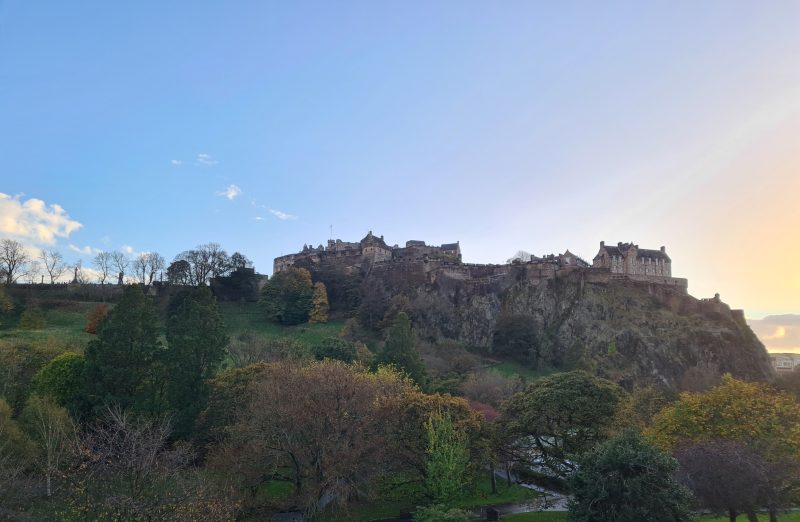
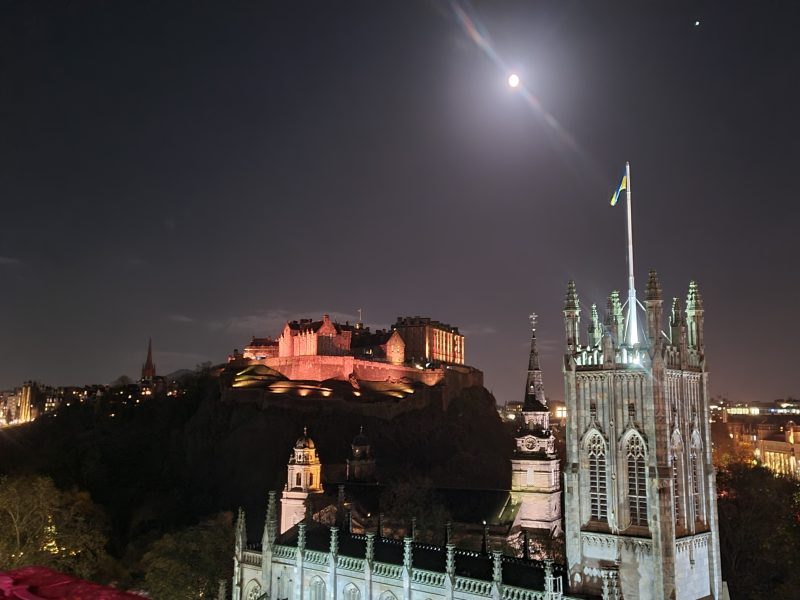
The Royal Mile
A historic street connecting Edinburgh Castle to the Palace of Holyroodhouse, lined with shops, restaurants, historic buildings, and the Camera Obscura.
Holyrood Palace
The official residence of the British monarch in Scotland, with guided tours of the State Apartments and the ruins of Holyrood Abbey.
Arthur’s Seat
An extinct volcano in Holyrood Park, offering hiking trails and panoramic views of Edinburgh and the surrounding area.
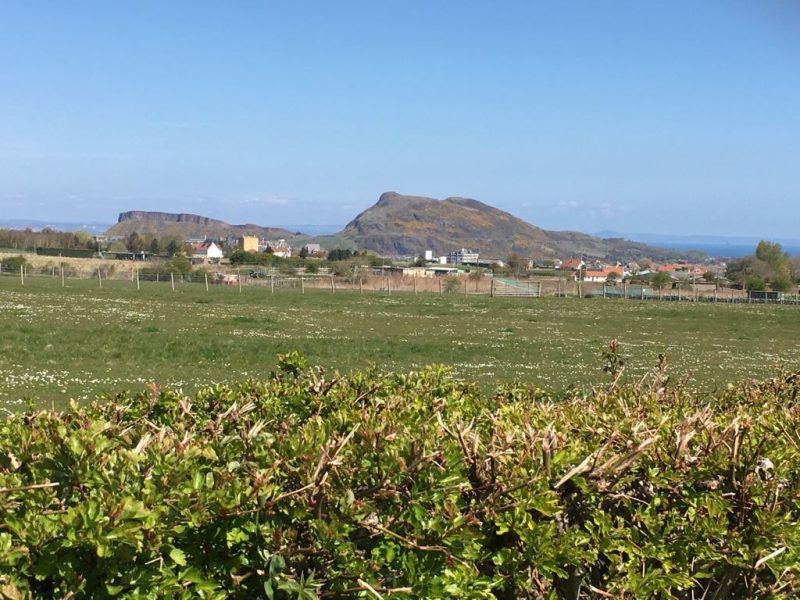
National Museum of Scotland
A museum showcasing Scottish history, culture, and natural history, with exhibits ranging from prehistoric artefacts to modern technology.
The Scott Monument
A Victorian Gothic monument dedicated to Sir Walter Scott, offering views of Edinburgh from its viewing platform after climbing its narrow spiral staircase.
Princes Street Gardens
Public gardens at the foot of Edinburgh Castle, featuring monuments, floral displays and it is a peaceful retreat.
Calton Hill
A hilltop park with iconic monuments such as the National Monument, Nelson Monument, and Dugald Stewart Monument, offering panoramic views.
Greyfriars Kirkyard
A historic cemetery known for its atmospheric gravestones, including the grave of Greyfriars Bobby, a loyal dog who guarded his owner’s grave.
Edinburgh New Year
A New Year extravaganza is held, thousands of national and international visitors gather in Edinburgh to welcome in the New Year.
Melrose Abbey
South of Edinburgh is the ruins of Melrose abbey, founded 1136 by Cistercian monks at the request of David I; it was the chief house of that order in Scotland until the Reformation.
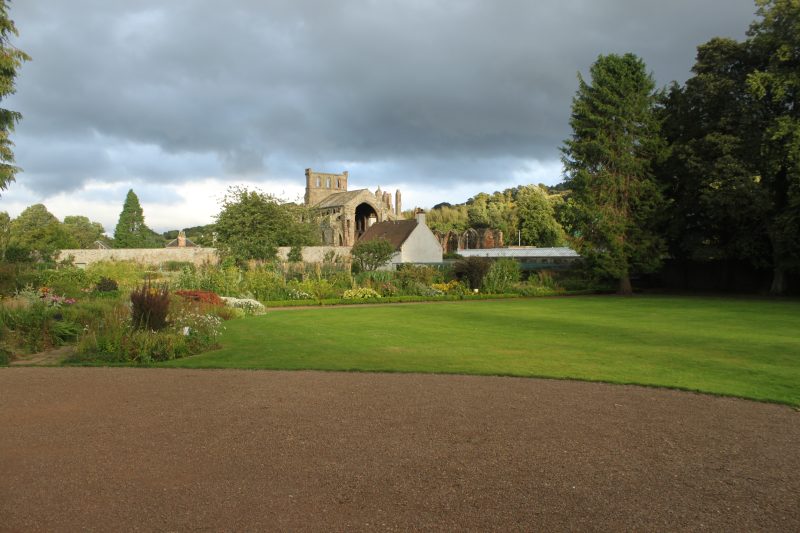
Newcastle
Newcastle Castle
A historic fortress consisting of the medieval Castle Keep and the Black Gate, offering insights into the city’s history with exhibitions and panoramic views from the tower.
Quayside
A vibrant waterfront area along the River Tyne, featuring modern architecture, historic buildings, a lively market, and views of the iconic Tyne Bridge and Millennium Bridge.
BALTIC Centre for Contemporary Art
A major art institution housed in a former flour mill, showcasing contemporary art exhibitions, installations, and cultural events in a striking modern building.
Tyne Bridge
An iconic landmark and symbol of Newcastle, known for its distinctive arch design and offering stunning views of the River Tyne and the cityscape.
St. Nicholas’ Cathedral
A historic cathedral with Gothic Revival architecture, notable for its impressive tower and serene interior, offering a peaceful retreat and a glimpse into the city’s religious heritage.
Great North Museum Hancock
A museum featuring diverse collections, including natural history exhibits, archaeological artefacts, and interactive displays on science and local history.
Victoria Tunnel
An underground tour of a 19th-century waggonway used as an air-raid shelter during World War II, providing an intriguing historical experience beneath the city.
The Biscuit Factory
The UK’s largest independent contemporary art gallery, housed in a former biscuit factory, featuring a range of artworks from local and international artists.
Grainger Market
A historic indoor market offering a variety of goods, from fresh produce to unique crafts and antiques, set in a Victorian building with a lively atmosphere.
Laing Art Gallery
An art gallery housing a diverse collection of fine art, including British paintings, decorative arts, and temporary exhibitions, situated in an elegant building.
Jesmond Dene Park
A scenic park offering natural beauty with wooded walks, a river, and wildlife, providing a tranquil escape from the urban environment.
Theatre Royal
A historic theatre hosting a range of performances, from drama and musicals to opera, known for its ornate interiors and cultural significance in Newcastle.
Ouseburn Farm
A community-run farm offering a chance to interact with animals, you can participate in educational activities, and enjoy a rural experience in an urban setting.
The Lake District
A fantastic region, it has several stunning locations, Kendal, Keswick, Ullswater and of course Windermere, all destinations have superb scenery and marvellous views. There is an abundance of wildlife, lakes and mountain valleys; it has 16 lakes and over 150 peaks including Scafell the highest peak in England. It was to this area that the Victorians would come on holiday and famously climb with their hemp rope and tackety nail boots, the famous children’s book written by Beatrix potter and Poet William Wordsworth came from the Lake district.
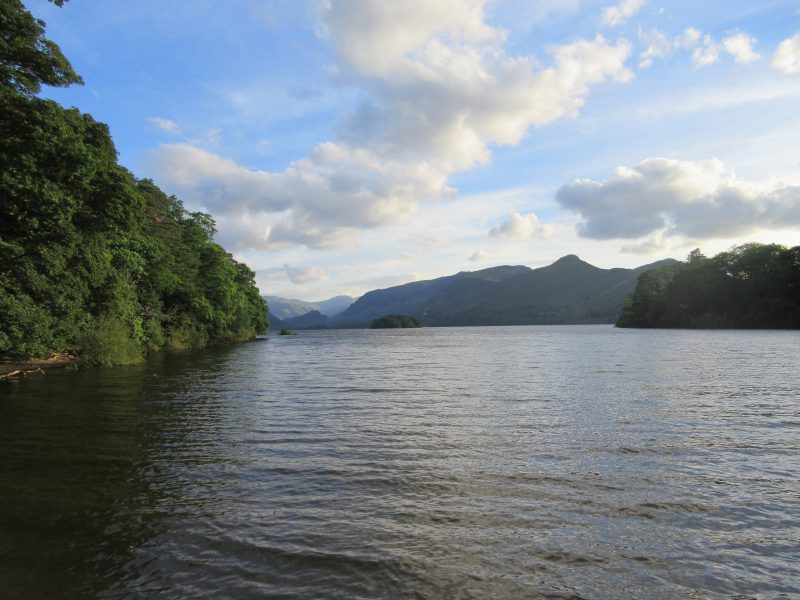
London
The British Museum
One of the world’s oldest and most comprehensive museums, housing a vast collection of art and artefacts from ancient and contemporary civilizations.
The Tower of London
A historic castle on the River Thames, known for housing the Crown Jewels and its grim history as a royal palace, prison, and execution site.
Buckingham Palace and Changing of the Guard
The official residence of the British monarch, with tours available in certain months. The Changing of the Guard ceremony is a popular attraction.
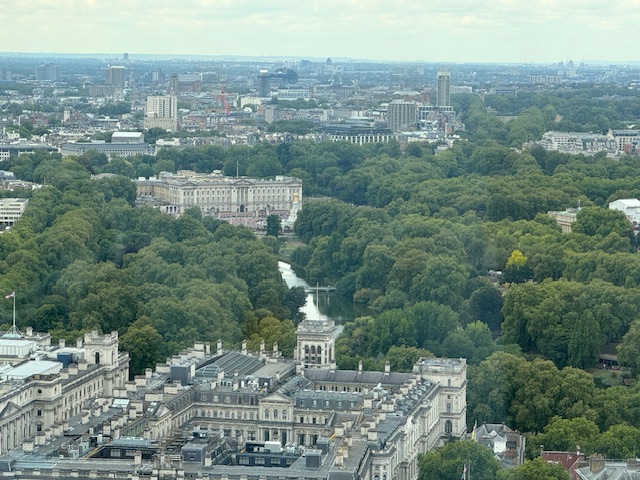
Westminster Abbey
A Gothic abbey where British monarchs are crowned and buried, known for its stunning architecture, royal tombs, and Poets’ Corner honouring literary figures.
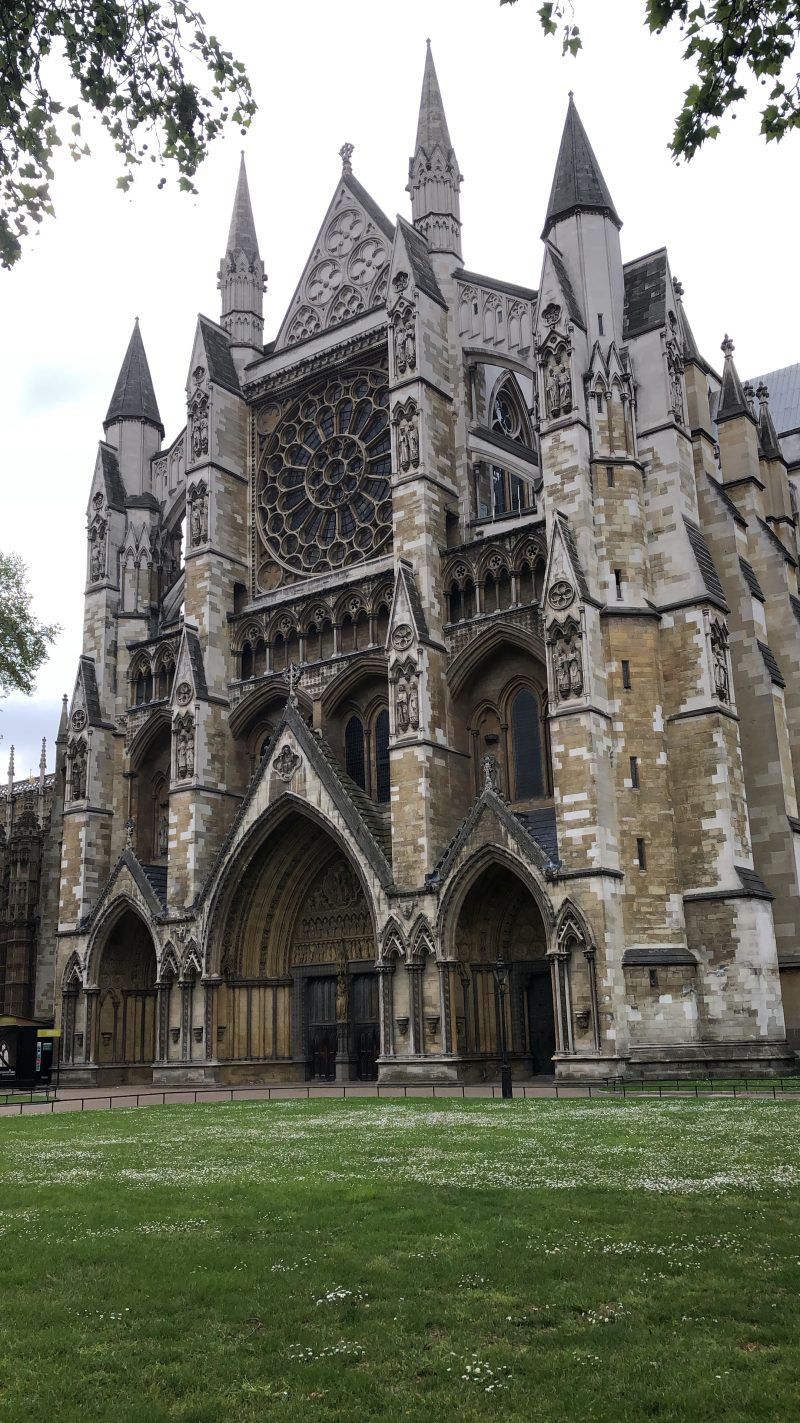
The Houses of Parliament and Big Ben
Iconic Gothic-style buildings housing the UK Parliament. Big Ben, the name for the Great Bell of the clock at the north end of the Palace of Westminster.
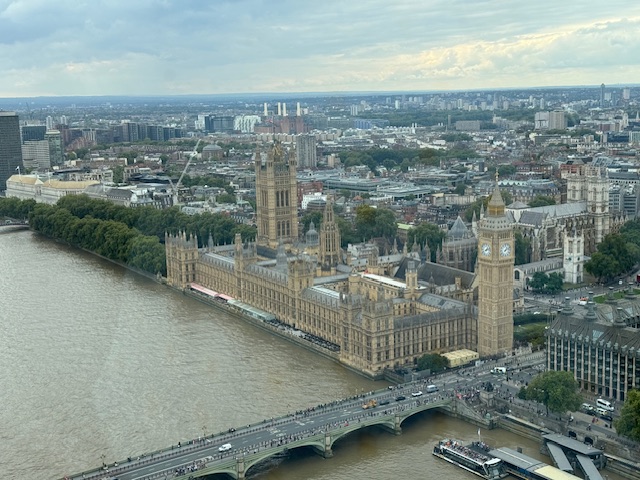
The London Eye
A giant Ferris wheel on the South Bank of the River Thames, offering panoramic views of London’s skyline and landmarks.
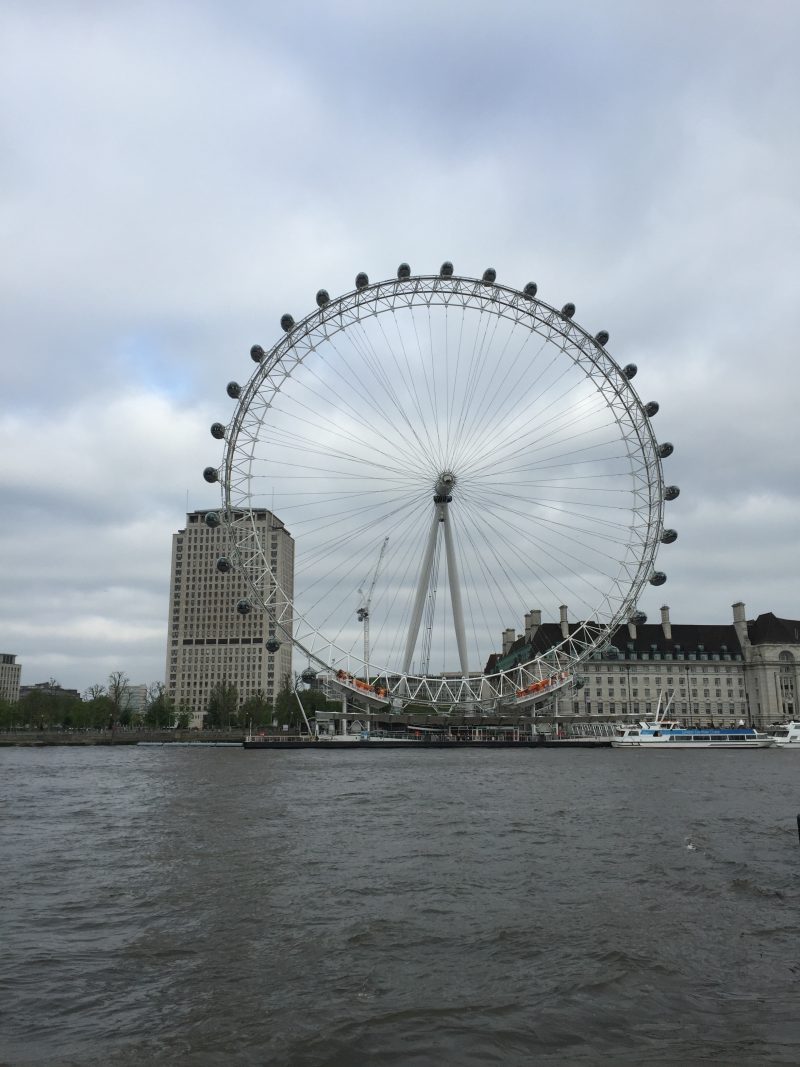
The Tate Modern
A contemporary art museum housed in a former power station, featuring works by international artists and stunning views from its rooftop terrace.
The National Gallery
An art museum housing a vast collection of European paintings from the 13th to the 19th centuries, including works by Van Gogh, da Vinci, and Rembrandt.
Covent Garden
A historic market area known for its shops, street performers, theatres, and the Royal Opera House.
The British Library
The national library of the United Kingdom, housing a vast collection of books, manuscripts, maps, and historical documents, including the Magna Carta.
Stonehenge
West of London is Stonehenge – The world famous UNESCO heritage site is a mysterious circular construction of massive stone slabs.
Plymouth
Mayflower Steps
A historic site on the waterfront where the Pilgrims are believed to have embarked on their journey to America in 1620, offering a significant historical connection and a scenic view of the harbour.
Royal Citadel
A historic fortress with impressive military architecture and panoramic views of Plymouth, providing insights into the city’s defensive history and its role in maritime defence.
National Marine Aquarium
An aquarium featuring exhibits on local marine life and ecosystems, including a large tank showcasing species from the English Channel, and interactive displays for educational experiences.
Plymouth Hoe
A large public space offering stunning views of Plymouth Sound, home to notable landmarks such as the Royal Citadel, the Royal Naval Memorial, and the iconic Sir Francis Drake statue.
Royal William Yard
A collection of historic naval buildings converted into apartments and commercial spaces, known for its stunning architecture and waterfront location, reflecting Plymouth’s maritime heritage.
Mayflower Museum
A museum dedicated to the history of the Pilgrim Fathers and their voyage aboard the Mayflower, featuring exhibits on the ship’s journey and its impact on American history.
Sutton Harbour
A picturesque area of the city’s harbour with historic buildings, shops, and restaurants, providing a vibrant waterfront atmosphere and views of the working harbour.
Mount Edgcumbe House and Country Park
A historic manor house set in expansive gardens and parkland, offering a glimpse into 18th-century life, with beautifully landscaped grounds and views of Plymouth Sound.
The Box
A modern museum and cultural centre featuring exhibits on local history, art, and archaeology, housed in a contemporary building with engaging interactive displays.
Royal Naval Memorial
A prominent war memorial on Plymouth Hoe commemorating sailors who died in World War I and World War II, offering historical reflection and a place of remembrance.
Plymouth Barbican
A lively area with narrow streets, historic buildings, shops, restaurants, and bars, offering a vibrant atmosphere and access to waterfront views and boat trips.
Tinside Lido
A historic open-air swimming pool with Art Deco architecture, offering a unique and refreshing experience with views of the harbour and Plymouth Sound.
Boringdon Hall Hotel & Spa
A historic manor house with stunning architecture, offering luxury accommodations and a spa experience, providing a blend of historical charm and modern relaxation.
Drake Circus
A modern shopping centre in the heart of Plymouth, featuring a range of retail outlets, restaurants, and entertainment options, catering to shopping and dining needs.
Cornwall
Home to the first and last destination in England.
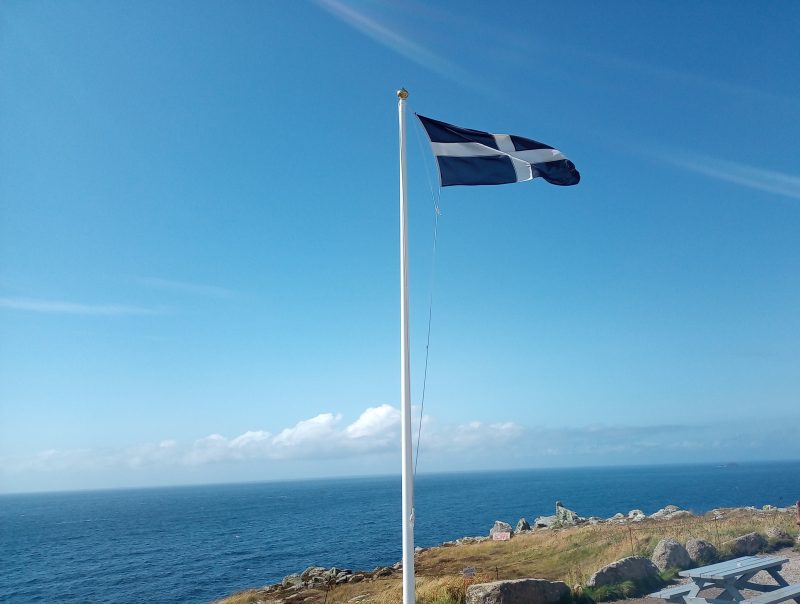
St Michael’s Mount
Linked to the town of Marazion by a causeway of granite setts, passable between mid tide and low water, it is managed by the National trust.
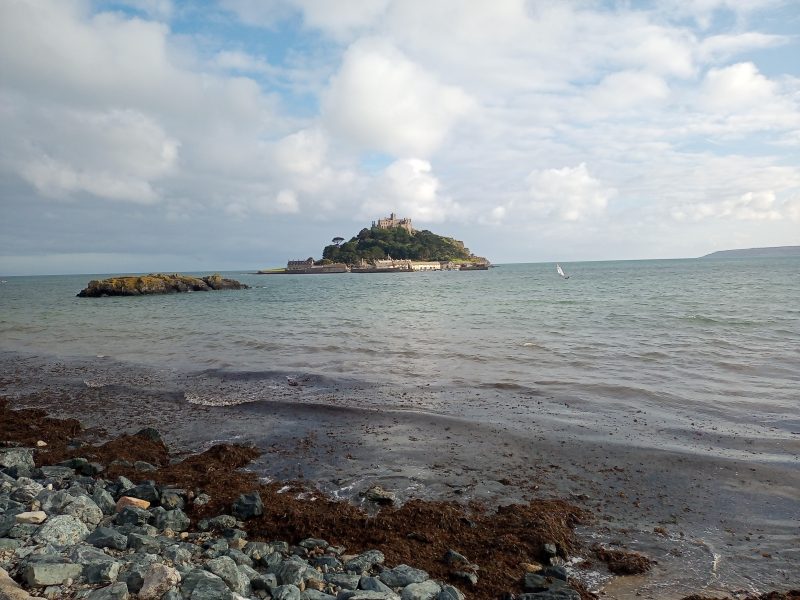
Cardiff
Cardiff Castle
A historic castle with Roman origins, later transformed into a lavish Gothic Revival mansion with stunning interiors and expansive grounds in the heart of the city.
Principality Stadium
A major sports and events venue, home to Welsh rugby and known for its retractable roof, offering stadium tours and hosting major concerts and sporting events.
Cardiff Bay
A vibrant waterfront area featuring shops, restaurants, and attractions like the Wales Millennium Centre with scenic views.
Wales Millennium Centre
A striking arts centre in Cardiff Bay, known for its unique architecture and hosting a range of performances, from opera and theatre to dance and concerts.
National Museum Cardiff
A museum offering diverse exhibits, including natural history, art collections, and archaeology, with highlights like Impressionist paintings and Welsh artefacts.
Bute Park
A large public park adjacent to Cardiff Castle, offering peaceful walks, beautiful gardens, and the remains of Cardiff’s medieval city walls, perfect for relaxation and recreation.
St. Fagans National Museum of History
An open-air museum showcasing Welsh life through reconstructed historic buildings, including farmhouses, cottages, and a working mill, set in beautiful parkland.
Roath Park
A popular park featuring a large boating lake, beautifully landscaped gardens, and a glasshouse with tropical plants offering a tranquil escape.
Llandaff Cathedral
A historic cathedral with impressive Gothic architecture, located in the picturesque suburb of Llandaff, offering serene surroundings and a rich ecclesiastical history.
Techniquest
A hands-on science discovery centre in Cardiff Bay, featuring interactive exhibits, workshops, and planetarium shows.
Cardiff Market
A historic indoor market offering a variety of local produce, goods, and food stalls, housed in a Victorian-era building with a vibrant atmosphere.
Castell Coch
A fairytale-like Gothic Revival castle located just outside Cardiff, known for its whimsical design and richly decorated interiors, nestled in a wooded hillside.
Chapter Arts Centre
A cultural hub offering a range of events, including independent films, art exhibitions, live performances, and workshops, set in a vibrant community space.
Sophia Gardens
A scenic park and home to the Glamorgan County Cricket Club, offering green spaces for walking, sports facilities, and a beautiful setting along the River Taff.
Blaenafon
North East of Cardiff lies Blaenafon – There is a National coal museum which is famous for underground tours. Travel 300ft down in a cage and walk around original coal workings. There is still an engine house and pony stables. Nearby is the former Blaenafon iron works museum, ironworking in South Wales has been dated back to the Roman period.
Snowdonia
North East of Cardiff is Snowdonia, it has the highest mountain in Wales this is perhaps the best recognised landmark in the country, there are coastal route paths, coves of small sandy beaches and the Wales coastal path which is over 850 miles long. East side of Snowdonia is Portmadog famous for narrow gauges heritage railways which travels through forest and mountain scenery.
Dinorwig
In North East Wales there is Dinorwig – One of the best environmental achievements ever, it blends a mountain power station and scenery into one and is hidden deep below Elidir mountain visits into the mountain are fantastic.
Shropshire Hills
North of Cardiff are the Shropshire hills, the most famous line penned about Shropshire is by a poet AE Housman, who writes of its ‘blue remembered hills’. With its rolling downs, medieval towns and pastoral sensibilities hark back to a simpler age. Nowhere is this more true than in its south western quarter, designated as the Shropshire Hills area of outstanding natural beauty (AONB). Stretching from the welsh border towards the town of Telford, the AONB encompasses a wealth of upland icons and unusually complex geology, including the long Mynd plateau, the quartzite Striperstones ridge, the limestone escarpment of Wenlock edge, the lofty Clee hills and the Wrekin, a distinctive summit comprising eight different types of rock.
Shropshire hills have varied and good eating, medieval Ludlow, just south of the AONB, was the UK’s first Cittaslow, a ‘slow town’ focused on promoting local produce. As this is welsh borders country, there are also castles and defences aplenty, from handsome Stokesay, the best-preserved fortified medieval manor in England, to the dramatic ruins of 13th century Clun castle.
You can meander around the area of outstanding natural beauty; follow the orange buzzard waymarks and visit Bishops castle, a sleepy little market town that’s home to two breweries, including the Three Tuns (EST 1642) the oldest working brewery in Britain.
Belfast
Belfast City Hall
An iconic Baroque-style building in the heart of Belfast, featuring impressive architecture, historical exhibits, and guided tours that explore the city’s history and government.
St. George’s Market
A historic market dating back to the 19th century, offering a lively atmosphere with stalls selling local produce, crafts, and food, alongside live music and events.
Crumlin Road Gaol
A former prison turned museum, offering guided tours that delve into its history, famous inmates, and role during the Troubles, with an eerie yet fascinating atmosphere.
Belfast Castle
A picturesque 19th-century castle located on Cave Hill, offering stunning views of the city, beautifully landscaped gardens, and a visitor centre with exhibits on local history.
The Ulster Museum
A museum featuring a diverse range of exhibits, including art, natural history, and archaeology, with highlights such as the Spanish Armada treasures and the Egyptian mummy.
Botanic Gardens
A Victorian-era park with beautifully landscaped gardens, a stunning glasshouse, and peaceful walking paths, located near Queen’s University Belfast.
Cave Hill Country Park
A scenic park offering hiking trails, panoramic views of Belfast, and historical sites like Napoleon’s Nose, which is said to have inspired Jonathan Swift’s Gulliver’s Travels.
Peace Walls
A series of murals and walls that divide certain neighbourhoods, offering a poignant reflection on Belfast’s history and the Troubles.
Grand Opera House
A historic theatre known for its ornate Victorian design, hosting a variety of performances including theatre, opera, and concerts in a beautifully restored setting.
Queen’s University Belfast
A prestigious university with impressive Gothic Revival architecture, beautiful campus grounds, and the Naughton Gallery, which hosts contemporary art exhibitions.
Stormont Estate
The seat of the Northern Ireland Assembly, featuring the iconic Parliament Buildings set within expansive parkland, with guided tours offering insights into local governance.
Cathedral Quarter
A vibrant cultural and entertainment district, known for its lively pubs, street art, and cultural venues, cantered around the impressive St. Anne’s Cathedral.
Albert Memorial Clock
A historic clock tower often referred to as Belfast’s “Leaning Tower,” offering a striking landmark in the city centre with a rich history and distinctive Gothic design.
The Giants Causeway
North East of Belfast is the Giants Causeway, this is a UNESCO World Heritage Site, on one side there is the North Atlantic and on the other side cliffs. It has dramatic views and a small path takes you to an old archway and sheer drops. It has polygon shaped columns apparently left from a volcanic eruption. Near the sea you can sit on top of them while further along the route they form extremely high columns in the hillside almost like temple columns.
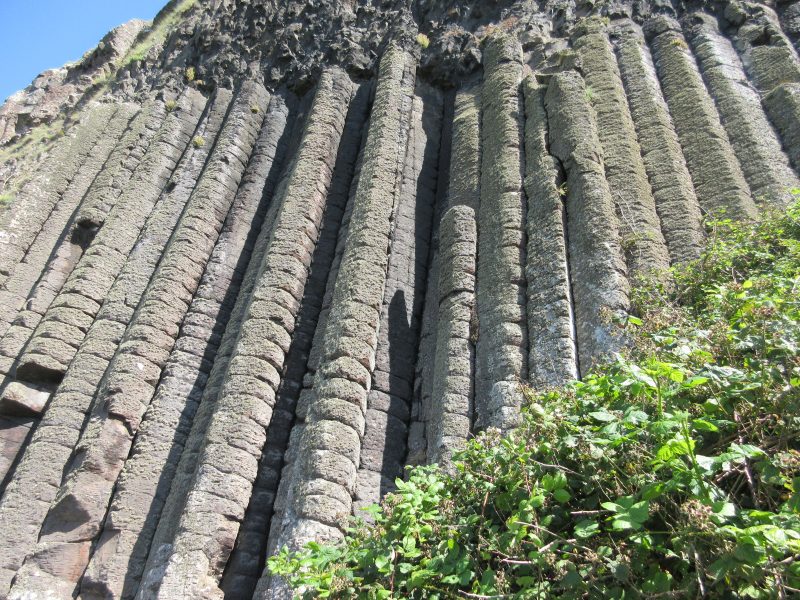
Dunluce Castle
North East of Belfast on a cliff edge is the 13th century ruined medieval Dunluce Castle. This UNESCO World Heritage site has a rich and turbulent past, this Castle was the seat of Clan MacDonnell
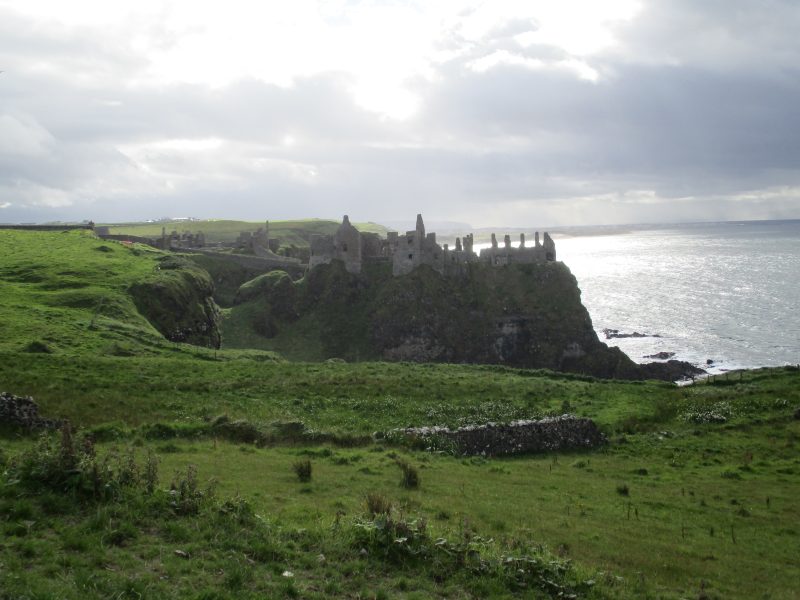
Glasgow
Kelvingrove Art Gallery and Museum
A grand museum and gallery housing a diverse collection of art and artefacts, including works by Salvador Dalí and Charles Rennie Mackintosh set in a stunning red sandstone building.
Glasgow Cathedral
A magnificent medieval cathedral with striking Gothic architecture, known for its beautiful stained glass windows, historic crypt, and connection to St. Mungo, the city’s patron saint.
The Riverside Museum
A modern museum dedicated to transport and travel, featuring a vast collection of vehicles, from vintage cars and bicycles to trains and trams.
Glasgow Science Centre
An interactive science museum with hands-on exhibits, a planetarium, and an IMAX cinema, offering engaging experiences for visitors of all ages in a striking titanium-clad building.
George Square
The heart of Glasgow’s civic life, surrounded by historic buildings such as the City Chambers, featuring statues, fountains, and a lively atmosphere, often hosting public events.
The Hunterian Museum and Art Gallery
Scotland’s oldest museum, located at the University of Glasgow, featuring exhibits on natural history, Roman artefacts, and works by Whistler and Mackintosh.
Glasgow Green and the People’s Palace
The city’s oldest park, featuring wide open spaces, walking paths, and the People’s Palace museum, which explores the social history of Glasgow and the lives of its people.
The Lighthouse
Scotland’s Centre for Design and Architecture, housed in a building designed by Charles Rennie Mackintosh, offering exhibitions, events, and panoramic views from its tower.
Glasgow Botanic Gardens
A beautiful garden and glasshouse complex featuring exotic plants, landscaped grounds, and the iconic Kibble Palace, offering a tranquil escape.
Pollok Country Park
A large park home to Pollok House, a grand historic mansion with an impressive art collection, and the Burrell Collection, featuring medieval art, Asian artefacts, and more.
The Tall Ship at Riverside
A historic sailing ship, the Glenlee, now a floating museum located beside the Riverside Museum, offering a hands-on experience of maritime history.
New Lanark
South East of Glasgow is New Lanark, a former 18th century spinning mill opened in 1786 by David Dale, recognised as a UNESCO World heritage site, visit the award winning centre to learn all about its fascinating history.
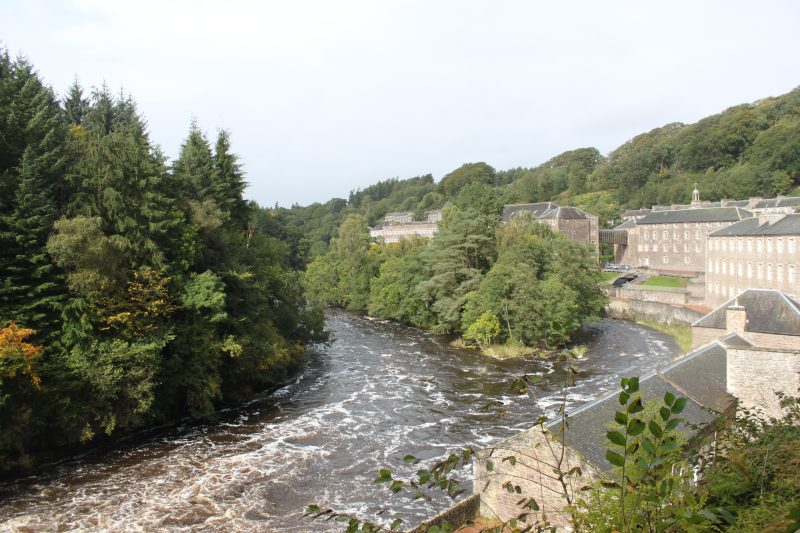
Dumfries and Galloway
South of Glasgow is Dumfries and Galloway, this area is renowned for its beautiful scenery with fantastic outdoor activities and trails.
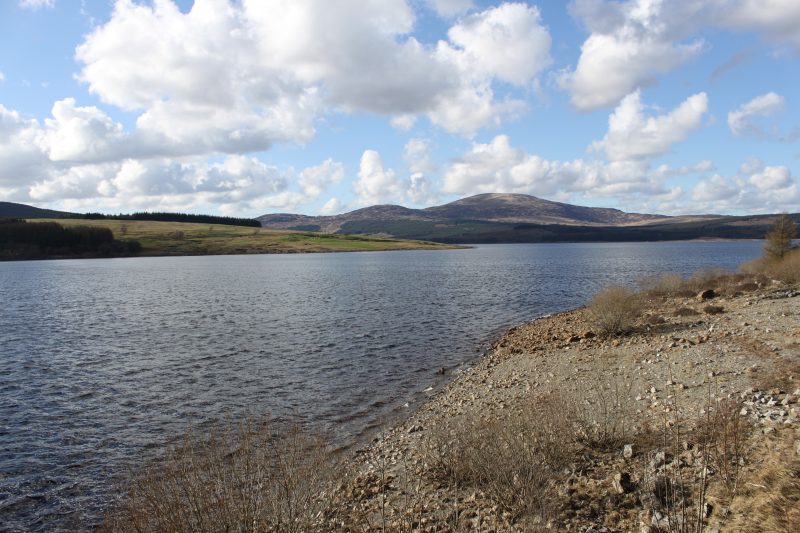
Scottish Highlands
North of Glasgow is the Scottish Highlands, a historical region of Scotland. It has a rich history, stunning scenery, high mountains and fantastic viewing. Visit the World famous Loch Ness or pass through the Cairngorms National Park.

